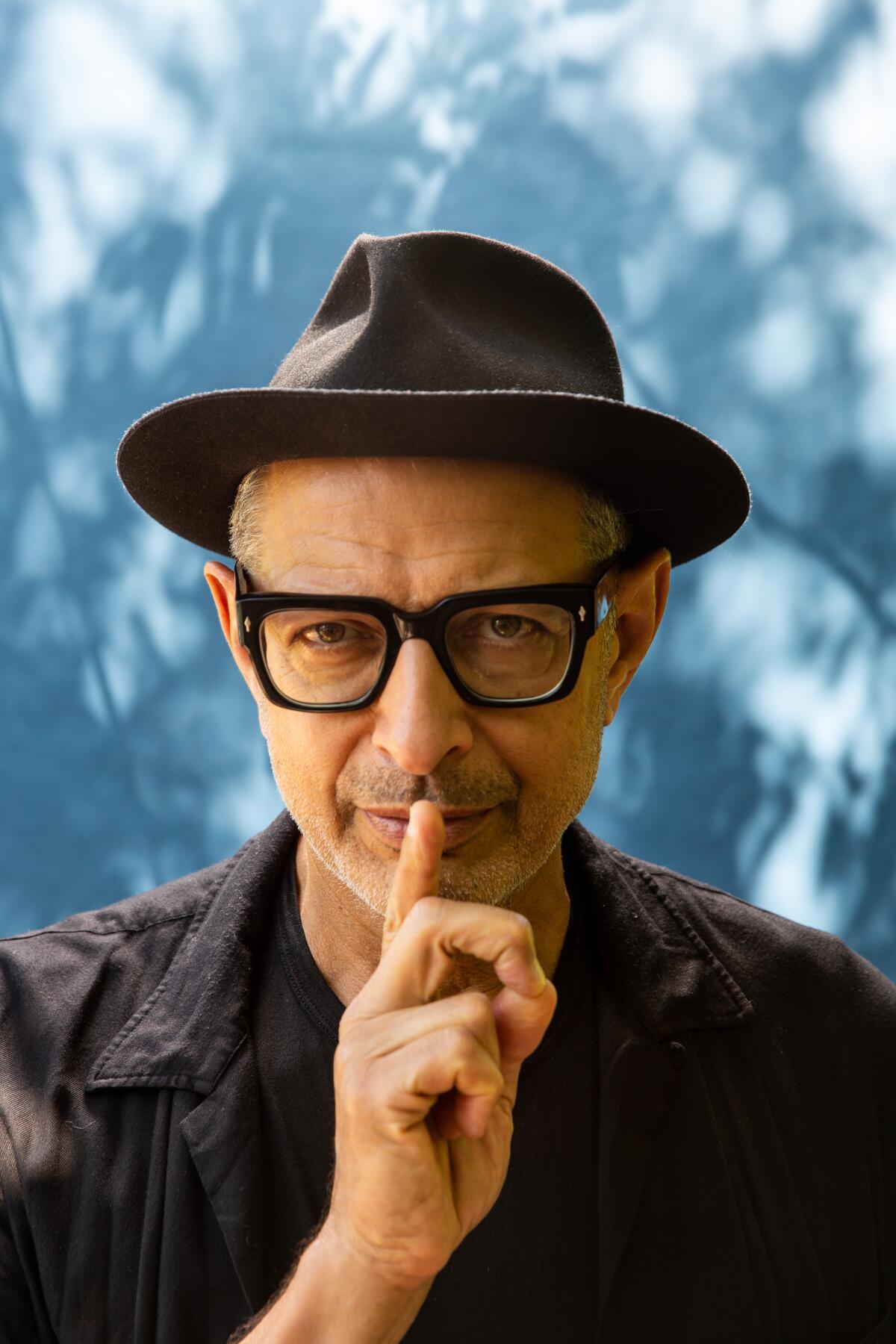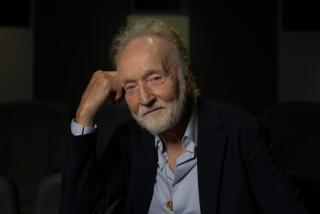Classic Hollywood: Jeff Goldblum’s long, strange Hollywood journey

Jeff Goldblum used to be just an actor. Now he’s a pop culture rock star, so ubiquitous that he was his own category on the ABC game show “The $100,000 Pyramid,” so recognizable that a 25-foot, 330-pound statue of Goldblum as his “Jurassic Park” character Dr. Ian Malcolm was placed in a London park near the Tower Bridge.
“I think they took it away shortly thereafter,” Goldblum said in his distinctive cadence, which always makes you wonder if he’s joking or not. “I went on ‘The Graham Norton Show’ and it has been decapitated and they brought the big head out!”
Goldblum has become a member of the Marvel Cinematic Universe, bringing his droll sense of the absurd to the character of the Grandmaster in Taika Waititi’s 2017 blockbuster “Thor: Ragnarok.” And he has collaborated with the New Zealand filmmaker on a series of stylish and amusing Apartment.com commercials.
He’s also an acclaimed jazz pianist who has recorded one album with his group, the Mildred Snitzer Orchestra — named after a family friend — and is about to start another. Not bad for a 66-year-old father of two young sons who made his film debut 45 years ago as a thug in the Charles Bronson revenge thriller “Death Wish.”
“It’s uncommon to have been continually working,” Goldblum acknowledged in a recent interview. “I’m very, very grateful and sort of astounded. Not only that I’m paid attention to or made the subject of one thing or another. But that I still have creative choices more varied than ever. I still feel like I’m on the threshold of my best work, not only understanding it but being able to practice it.”
Goldblum goes from quirky to creepy in his latest film, the 1950s-set “The Mountain,” directed by Rick Alverson, which opens Friday. He plays lobotomist Dr. Wallace Fiennes, a character based on Dr. Walter Freeman, who performed the botched lobotomy on Rosemary Kennedy. Along with his sullen young assistant, Fiennes visits the asylums of the West Coast performing lobotomies and electric shock therapy. Needless to say, Dr. Fiennes is so messed up himself that he needs a few hundred sessions with his therapist.
The tall, lanky actor is all charm during a breezy hourplus interview at one of his favorite haunts, the venerable Chateau Marmont. Over breakfast he talks about why he became an actor and working with the likes of Robert Altman (“California Split,” “Nashville,” “Beyond Therapy,” “The Player”), Philip Kaufman (“Invasion of the Body Snatchers”), Lawrence Kasdan (“The Big Chill,” “Silverado”) , Steven Spielberg (“Jurassic Park,” “The Lost World: Jurassic Park”) and Alverson.
You were 17 when you left Pittsburgh and went to New York to study acting with Sanford Meisner. Why did you choose him as your acting teacher?
It wasn’t much of a decision. I had my heart set on an acting career since I was 10 and then it really crystallized when I went to Carnegie Mellon University for a couple of summer sessions between ninth and 11th grades.
There was a teacher at Carnegie Mellon University, Mordecai Lawner, who was very nice and took a liking to me. I said: “Where can I go now?” He said he had studied with Sandy and taught for Sandy. He said he’s the best teacher around. I didn’t have an entrée or anything, but I had the information. I went to Mr. Sandy Meisner. I was 17. Sure enough, I got it.
How did Robert Altman find you? Was it when you were doing “Two Gentlemen of Verona” on Broadway?
The first thing I auditioned for [after “Two Gentlemen”] was “El Grande de Coca-Cola,” this kind of funny show. We were doing it at Plaza 9 in the basement [of the Plaza Hotel]. He saw it and called me and said, “You want to be in ‘California Split?’” So, he flew me out to California for the first time. On the day that I came out, he said, “I have this other idea. You were wonderful in the play, and if you like me and I like you, we’d do this thing this summer — ‘Nashville.’ I have this idea for you to be this silent kind of bike rider.” So, we did both things.
This was at the height of his powers. He was feeling his oats. He was a brave and fantastic artist. Really what you look for is somebody who can make a good movie, and he was making good movies. And the way he worked was free and naturalistic.
What was working with Lawrence Kasdan on 1983’s “The Big Chill” and 1985’s “Silverado” like?
That was a lovely experience. We rehearsed [“Big Chill”] like a play. He was very meticulous about the script that he’d written with Barbara Benedek. We rehearsed in a rehearsal room here for a couple of weeks like a play. And then we went down to Atlanta. Before we shot the flashback that got cut out of it with Kevin Costner, we rehearsed some more on the set. I think they left us alone for an evening, for instance, and all of us together made a meal in the house where we were going to shoot. It was very creative and kind of theatrical — unusual.
Tell me about Philip Kaufman. You got to work with him on 1978’s “Invasion of the Body Snatchers” and one of my favorite films, 1983’s “The Right Stuff.”
I love Philip Kaufman. He’s wonderful. He’s a smart, lovely, gracious, gentle, sensitive and unusual guy. I loved working on “Invasion of the Body Snatchers.”
We were in San Francisco. There was a day on the set. I wasn’t improvising particularly, but the way I kind of tweaked a line. Veronica Cartwright, who played my wife, said, “Why do we always expect them to come in metal ships?” I say to her, I never expected them to come in metal ships. Somehow, the way I did it, he laughed at that. He said, “OK. That’s fine. That was good. Let’s move on.” The way he appreciated it and enjoyed me made me see myself in an enhanced way and find something that was a little more self-trustful, really.
What about Steven Spielberg, with whom you worked on “Jurassic Park” and 1997’s “The Lost World: Jurassic Park”?
Fantastic. He’s so much fun and so focused and masterful. Even on big movies like those, he’s actor-friendly and creative. He knows how to make a wonderful movie and use people interestingly. He knows performances and actors and how to talk to actors, love actors.
How does Alverson measure up to the acclaimed directors with whom you worked?
I think the world of him. Although he’s a real artist type, in my humble opinion, he doesn’t posture himself. He’s not pretentious. He has just a deep and wide idea about what he wants to do.
More to Read
The biggest entertainment stories
Get our big stories about Hollywood, film, television, music, arts, culture and more right in your inbox as soon as they publish.
You may occasionally receive promotional content from the Los Angeles Times.










